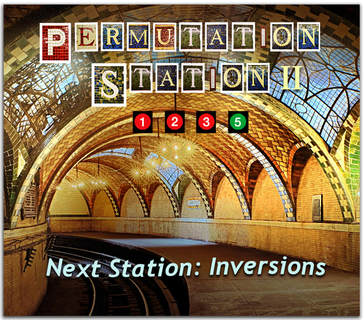
Whereas the 24 permutations of the 1235 Major Scale step tetrachord, or four note grouping, was the subject of the first volume, “Permutation Station II”, building upon that premise, takes a closer look at the first, second and third inversions of each individual permutation. Along with the original root positions examined previously, a total of 96 unique melodic possibilities per key are up for examination within its pages.
Possibly, for the first time anywhere, this book explores the possibilities of using both single and multiple unaltered 1235 units as material to fill any chord type; a handy tool for improvisers and composers both.
In each case:
Root Position - C or 1 is the lowest note
1st Inversion - D or 2 is the lowest note
2nd Inversion - E or 3 is the lowest note
3rd Inversion - G or 5 is the lowest note
Although the note names change with the key, the number designations relative to their inversion remain constant.
For example, in bar #1 the first grouping – labeled 3251(1) – indicates a 3251 permutation in first inversion. As the number “1” within the four note grouping indicates the letter name of the Major scale from which it originated, this one in question is from F Maj. (F-G-A-C); a very consonant sounding choice over D min7.
The second grouping in bar #1, labeled 1523(3), represents that permutation in third inversion. “1” is G and “5” is D, the group's lowest note, indicating (3) - third inversion.
So what we have in bar #1 is a pair of 1235 permutations in F and G, in first and third inversions, respectively. Together they form a smooth, intervallic eight-note melody outlining a D min7 chord (Dorian Mode).
This “whole step apart” relationship works splendidly in the following 2 bars, as well. In bar #2, Eb and Db permutations provide all the altered color tones of a G7alt chord.
Likewise, 1235 permutations in C and D provide the Lydian flavor of a tonic Major 7#11 in bar #3.
The sequence continues, up a semitone, with a 3512 permutation from G in second inversion, which adds a trio of altered tones to the Db7, before resolving neatly to C Maj, only to jump up and spiral back down again, via root position permutations from Bb & Ab (5231 & 5312, respectively), before once again resolving, via leading tones, to the 7th of C Maj7. .
The two basic rules which I followed for each inversion were:
- Stay within the range of an octave, and
- Keep the integrity of the four-note grouping of eighth-notes intact – meaning no foreign notes or rests in between – all four notes must be present. Triplets are OK as long as the previous conditions are met. Exceptions can be made on a static chord lasting several beats or more.
Further application of 1235 permutations and their inversions, in the form of a Rhythm Changes Etude (in Concert, Bb & Eb) are found in the Appendix.
Harmonizations, chord voicings and bass lines for selected ii-V7-I sequences are presented, as well.
B. Stern
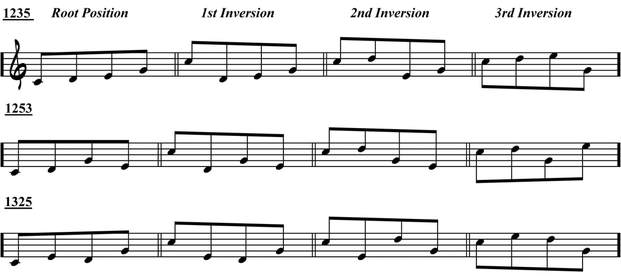


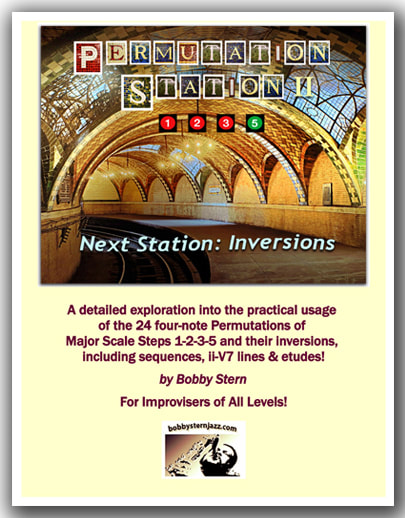
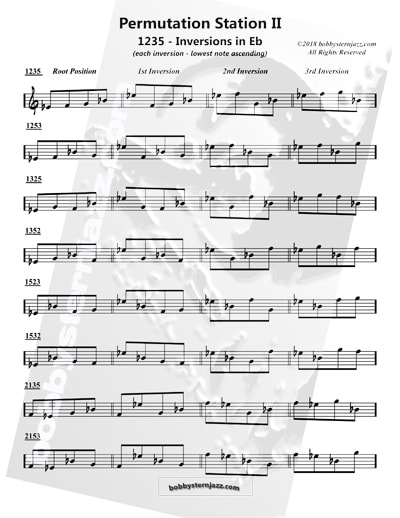
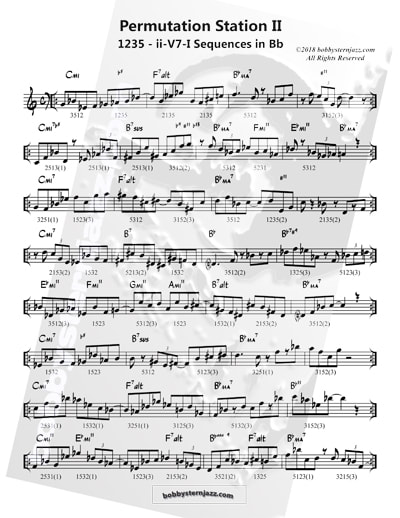
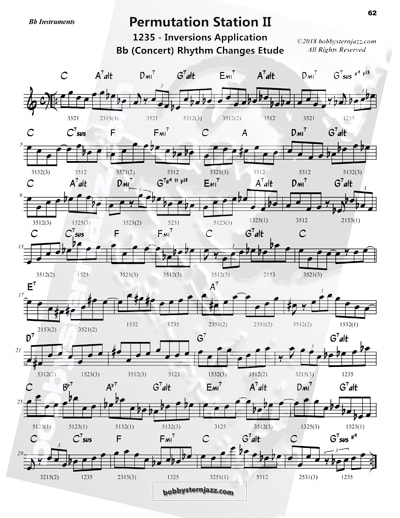

 RSS Feed
RSS Feed









